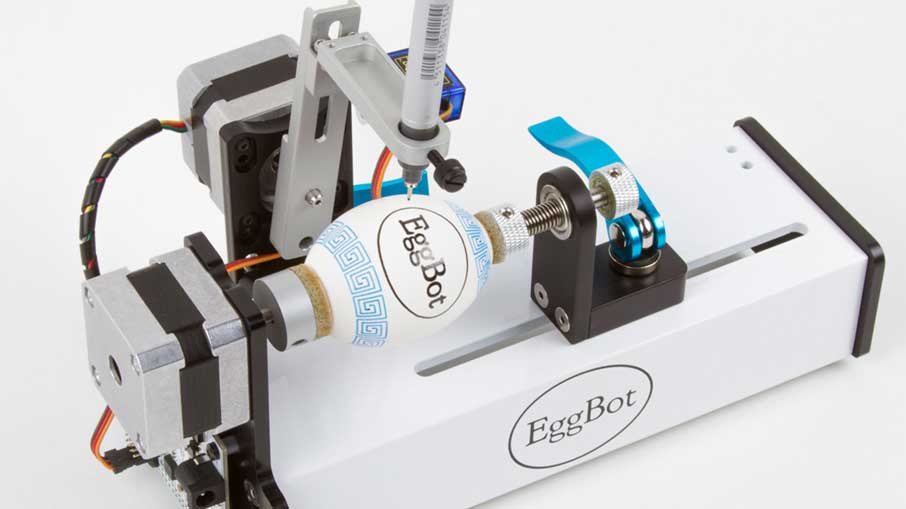Table of Contents
ToggleFintech is already worth over $300 billion, and that number keeps climbing. But here’s the catch, off-the-shelf tools can’t keep up. Big ideas stall. Security gaps grow. And user demands? Higher than ever. So, what’s actually working behind the scenes of the fastest-growing fintech brands? The answer isn’t as obvious as you think. Custom fintech software development is changing the game, but not in the way most people expect. Let’s look closer at what really drives today’s smartest fintech builds.
Challenges with Legacy Systems and Off-the-Shelf Solutions
Most fintech platforms still run on old, rigid systems that struggle to support modern needs. And when companies use off-the-shelf fintech tools, they often hit a wall fast. Let’s break down the real problems holding back fintech growth.
Limitations in scalability and flexibility
One size doesn’t fit all, especially in fintech. Problems with off-the-shelf fintech software start when your app needs to scale. You’re stuck with fixed features, rigid workflows, and limited integrations. That’s not how real innovation works. With scalable fintech software architecture, you can grow your product your way, add features on demand, and scale across regions without rewriting your whole codebase. If flexibility matters, why custom software works better for fintech becomes very clear. You control everything, from infrastructure to features.
Security vulnerabilities and compliance gaps
Security isn’t just a checklist, it’s a dealbreaker in fintech. Off-the-shelf tools often lack proper encryption, real-time monitoring, and regulatory alignment. That’s risky. You need fintech software with built-in compliance that covers PCI DSS, GDPR, and even real-time audit logs. Custom builds also allow custom KYC/AML modules for fintech, giving you peace of mind and a serious edge. Whether it’s tokenization or MFA, you control your security stack, not a vendor with 10 other clients.
Slow innovation cycles and high long-term costs
Here’s the truth: pre-built solutions may look cheap up front but cost you more in the long run. Why? You’re stuck with vendor timelines and limited updates. Custom fintech software development houston lets you build faster, smarter, and launch updates on your own schedule. Plus, with MVP development for fintech startups, you can roll out features faster and iterate based on real feedback, not vendor cycles. Over time, this approach cuts costs and boosts innovation ROI.
Poor user experience and outdated architecture
Let’s face it, finance apps live or die by UX. Outdated systems lead to clunky UI, slow load times, and broken experiences. Users bounce. With custom fintech applications, you get sleek, mobile-first designs that match your audience’s habits. Add multilingual support, accessibility, and real-time engagement, and you’ll see the difference. Modern users want speed and clarity. With fintech solutions for peer-to-peer lending or neobanking, a poor interface is not an option. People expect modern. Don’t serve them outdated.
The Rise of Digital Banking, Embedded Finance, and DeFi
Fintech isn’t just competing with banks, it’s replacing them. Digital-first finance is now the standard. What’s fueling this growth? Fast-moving innovations like Banking-as-a-Service, DeFi, and embedded finance. Here’s what you need to know.
The shift from traditional to digital-first financial services
Customers don’t walk into banks anymore, they open apps. This massive shift created a wave of digital-native startups, from neobanks to wealth platforms, all powered by custom software. Why? Because only custom software for neobanks can support features like real-time payments, user verification, and instant credit checks. Legacy systems weren’t built for this. Now, with over 65% of users preferring mobile banking, digital-first isn’t optional, it’s the baseline.
Fintech ecosystems enabling Banking-as-a-Service (BaaS)
Banking-as-a-Service (BaaS) lets non-banks offer banking features, but it’s not plug-and-play. You need custom fintech software development that connects APIs, handles compliance, and manages accounts seamlessly. Off-the-shelf tools often fail at this. BaaS demands custom fintech applications with smart backends, clean interfaces, and strong security. For startups entering this space, MVP development for fintech startups helps you go live faster without sacrificing quality or compliance.
The growth of decentralized finance and the need for custom integration
DeFi is growing fast, with over $80 billion locked in DeFi protocols. But integrating with it isn’t simple. It needs solid architecture, wallet integrations, smart contract interaction, and more. That’s where custom software works better for fintech becomes obvious. You need custom software for wealth management platforms or investment tools that can speak to blockchains, not just databases. From yield farming to crypto lending, DeFi can’t run on templates.
How embedded finance demands tailored backend and frontend logic
Want to offer payments, loans, or insurance within a non-finance app? That’s embedded finance. But it’s not just about slapping on a widget, it needs a scalable fintech software architecture and API-level integration. Think: one app offering checkout loans, savings tools, and payouts. Without fintech software with built-in compliance, it’s a legal and performance mess. Custom fintech software development solves this by building logic that fits your exact user flow, securely and at scale.
What Is Custom Fintech Software Development?
Custom fintech software development means building financial apps from the ground up, just for your business. It’s flexible, scalable, secure, and designed to meet your exact features, goals, and regulations.
Definition and Core Principles
Custom fintech software is a strategic solution built around your business model. Instead of using templates or shared platforms, you get software that fits your team, users, and future plans. Think high performance, personalized experiences, and no wasted features, just the exact tools your fintech business actually needs.
Bespoke software tailored to specific business goals
Every fintech company has a different product vision. Whether you’re launching a neobank, BNPL platform, or investment app, your goals aren’t the same as others’. That’s why off-the-shelf tools fall short. With custom fintech software development, you build the logic, design, and backend around your business, not the other way around. You decide how the app works, who it serves, and what comes next. This means faster user adoption, better performance, and real alignment with your core objectives.
Emphasis on scalability, security, and performance
Let’s get real, finance apps can’t afford to crash or lag. From day one, scalable fintech software architecture must be a priority. As your users grow, your app needs to scale without breaking. On top of that, compliance and fintech software with built-in security are must-haves, not afterthoughts. Encryption, audits, multi-factor authentication, it’s all baked in. You also get complete performance control, with low-latency APIs and optimized databases. That’s the kind of power that keeps your app competitive and trustworthy.
How It Differs from Off-the-Shelf or SaaS-Based Solutions
Here’s the deal, off-the-shelf tools might save time, but they limit your potential. They come with fixed features, shared servers, and generic designs. Custom fintech development puts you in charge of everything, UX, backend, integrations, and even compliance. It’s the difference between building your product and just renting one.
Custom UX/UI, logic, and compliance vs. generic templates
With templates, you’re stuck adapting your app to someone else’s system. That’s backwards. Custom fintech software gives you full freedom to design interfaces and user journeys around real customer behavior. Plus, custom KYC/AML modules for fintech help you stay compliant without patchwork fixes. Whether it’s mobile-first design, real-time data flows, or geo-specific regulations, custom means you’re ready for anything. Forget cookie-cutter dashboards. Build the experience your users want, and the trust they need.
Full control over roadmap and integrations
You shouldn’t have to wait six months for a feature update. That’s the SaaS trap. With custom fintech applications, your roadmap is yours. You launch what you need, when you need it. Want to integrate with a new payment gateway? No problem. Add crypto wallets? Do it. Need to roll out an internal admin panel tomorrow? Go for it. From product sprints to security upgrades, custom development gives you total control over your growth and integrations, without waiting on a vendor’s timeline.
Competitive edge through tailored innovation
Standing out in fintech takes more than a logo and a slick interface. You need to move fast and ship features that solve real pain points. That’s where custom builds win. While your competitors rely on generic tools, you can launch custom fintech software with features no one else has. Think: instant credit scoring, gamified saving, personalized insights, all built just for your market. Innovation isn’t about bells and whistles, it’s about shipping smart, fast, and first.
Key Industries and Business Models It Supports
Fintech has dozens of business models. From neobanks to insurtech and peer-to-peer lending, custom fintech software development adapts to the niche you’re building for. Whether you need smart contract integration or secure loan processing, custom software lets you build products that fit each model perfectly.
Neobanks and challenger banks
Digital-only banks need more than mobile apps, they need fast KYC, instant transfers, user-first design, and 24/7 reliability. Custom development helps you build all that. From onboarding flows to internal fraud tools, everything is built for scale, security, and real-time performance, helping neobanks compete head-to-head with legacy banks.
Investment and wealth management platforms
Smart investing tools need smart software. With custom builds, you get real-time portfolio tracking, AI-powered insights, and secure transactions. Plus, you can integrate with APIs for stocks, crypto, or ETFs. Build platforms that match each user’s risk profile and make your UX as sharp as your strategy.
P2P lending, crowdfunding, and buy-now-pay-later (BNPL) services
Peer-to-peer platforms and BNPL apps need rock-solid matching algorithms, smart repayment logic, and full compliance workflows. Off-the-shelf can’t cover it. Custom fintech software lets you create logic-driven lending experiences that track risk, manage repayments, and grow with user demand, without compromising performance or trust.
Insurtech and RegTech solutions
Insurance and compliance aren’t flexible by nature, but your software can be. With custom builds, you can automate claims, onboard users faster, and meet changing regulatory rules. Whether you’re digitizing insurance workflows or building RegTech tools, custom fintech applications give you the agility and control your platform needs.
Key Drivers Behind the Demand for Custom Fintech Solutions
The push for custom fintech software development is stronger than ever. Businesses want more control, better user experience, and tools that actually solve real-world finance problems. Let’s explore what’s really fueling the need for custom-built financial technology today.
Rapid Innovation and Need for Differentiation
The fintech space is growing fast. But with speed comes competition. Using the same templates as your rivals just doesn’t cut it anymore. Companies are choosing custom fintech solutions to build one-of-a-kind features, smarter user flows, and tech that actually matches their product vision. Whether it’s embedded finance or cross-border payments, being different, and better, is the goal. And custom development makes that possible. You build exactly what your audience needs, not what a platform says you can have.
Changing Regulatory Environments
Let’s be honest, compliance isn’t optional in finance. And rules aren’t static. AML, PCI-DSS, GDPR, PSD2, they all keep changing. Pre-built software rarely keeps up. With custom fintech development, you can update systems fast, stay audit-ready, and create flexible modules that support global regulations. From onboarding to transaction reporting, everything can be fine-tuned for compliance. This helps you avoid costly fines and keep regulators happy, without slowing down your growth or rewriting your whole app every time a new rule drops.
Consumer Expectations for Personalization and UX
People expect apps that feel smart, fast, and personal. Fintech users want customized dashboards, instant alerts, and tools that speak their language. Generic designs? No thanks. With custom UX in fintech, you design everything from the ground up. That means custom flows for first-time users, smart prompts based on usage, and real-time support integration. And the best part? Happy users stay longer and refer more. That’s how custom interfaces lead to real business results.
Importance of Speed, Security, and Scalability
Speed and trust make or break any fintech app. Users want real-time transactions. Businesses want secure systems that grow with them. Off-the-shelf tools often fail under pressure. But with custom scalable fintech architecture, your app can handle traffic spikes, process large volumes, and keep everything fast, even during peak hours. You also get full control of security features like encryption, fraud detection, and audit trails. Fast. Safe. Built to scale. That’s what custom gives you.
Core Components of Custom Fintech Software Development
Building custom fintech software isn’t just about features, it’s about getting the core tech stack right. From backend performance to user-facing design, each part must work together. Let’s break down the building blocks that make fintech software strong, secure, and future-ready.
Architecture and Scalability
Your app’s structure isn’t just background noise, it’s the backbone. A good fintech software architecture uses microservices, modular code, and cloud-native setups that scale as your traffic grows. Start with 500 users, jump to 50,000, and performance stays smooth. Custom builds also support event-driven processing, which boosts speed without draining resources. And the real win? You avoid rework down the line. Plan smart from the start, and your app stays strong for years.
Data Security and Compliance
Finance apps handle sensitive info, names, bank accounts, transactions, everything. So, data security in fintech must be airtight. Custom apps let you set up advanced encryption, identity verification, and audit logs right from day one. You also build in compliance logic, KYC, AML, GDPR, so your platform is ready for regulators. Off-the-shelf platforms often miss that depth. Custom means you stay safe and compliant without messy patches or manual fixes.
APIs and Integrations
Fintech doesn’t live in a bubble. You need your software to talk to banks, credit bureaus, payment gateways, CRMs, and more. That’s where custom fintech integrations shine. You can build APIs that connect to whatever tools your team or users rely on. Want a Plaid link for account syncing? Easy. Need to feed data into a BI dashboard? Done. APIs make your app more flexible, faster, and ready for expansion, no matter the size or complexity of your ecosystem.
AI and Analytics
Data is only useful if you know what to do with it. With AI in fintech software, you can predict user behavior, detect fraud, offer investment tips, or even automate credit scoring. Combine that with real-time analytics dashboards and you’ll know exactly what’s happening inside your app. Who’s active? What features work? Where are users dropping off? This insight helps you make smart product decisions, improve customer retention, and launch features that actually matter.
User-Centric Design
A good app should feel natural, like it was made just for the person using it. User-focused design in fintech turns complex tasks like budgeting, investing, or applying for a loan into smooth, simple flows. With custom builds, every screen is designed with your audience in mind. Want a mobile-first interface? Or voice-enabled tools for older users? You decide. This attention to design keeps people engaged, lowers churn, and builds trust in your platform.
Use Cases of Custom Fintech Software Development
Custom fintech software development is reshaping how businesses serve their users. From payments to credit scoring, every financial experience is getting smarter and more personal. Let’s walk through the trending use cases that are actually making a difference.
Real-Time Payment Apps with Built-In Security
People want fast payments, but not at the cost of safety. Custom fintech solutions help brands build payment apps with fraud detection, tokenization, and multi-layer encryption. In fact, 89% of fintech users now say security influences which apps they trust. With custom development, companies can offer both instant processing and peace of mind.
AI-Powered Credit Scoring Tools
Traditional credit checks often miss the full picture. Now, companies use custom fintech software to pull in alternative data, like utility bills or eCommerce activity. AI then scores users more fairly. It’s helping over 35% of underbanked users get approved where they previously couldn’t. That’s fintech meeting real needs.
Smart Investment Platforms for Millennials and Gen Z
Younger investors expect simple, automated investing. With custom-built fintech platforms, companies can design AI-driven portfolios, gamified savings plans, and real-time insights. Apps like these have contributed to a 50% rise in Gen Z investing activity since 2022. Custom tools let firms speak their users’ language, and win their trust.
On-Demand BNPL Systems for eCommerce Brands
Buy Now, Pay Later isn’t just for the big players anymore. Thanks to custom fintech integrations, even smaller online stores can offer flexible payment plans. From Shopify add-ons to native checkout options, it’s all possible with API-driven builds. BNPL now accounts for 28% of all US eCommerce transactions, a number growing fast.
Fully Branded Neobank Platforms
Want to launch your own digital bank? You can. Custom fintech development makes it possible to build everything, from KYC onboarding to card issuing, under your brand. These platforms let you control the entire customer experience. In 2025, there are over 400 active neobanks globally, with new niche players launching every month.
Challenges and How to Overcome Them
Custom fintech software development comes with big wins, but it’s not always smooth. Budget stress, regulation issues, and tech confusion can slow things down. But here’s the good part: smart planning and the right partner can keep you on track. Let’s break down what usually goes wrong, and how to fix it.
Budget and Timeline Considerations
Custom fintech solutions often cost more than expected. Clear milestones and proper scoping avoid scope creep. Studies show 45% of fintech projects go over budget due to poor planning, don’t let yours be one of them.
Regulatory Risks and Security Concerns
One small compliance mistake can shut everything down. Custom builds need built-in updates for AML, KYC, and GDPR. Around 37% of fintech apps in 2023 failed due to lack of regulatory prep. Stay ahead, not behind.
Choosing the Right Tech Partner
A wrong tech team can waste both time and money. Look for proven fintech development firms with verified case studies and security-first practices. Ask for real metrics, not just promises. It matters.
Strategies That Work
Start lean. Test fast. Track everything. Agile workflows, API-first development, and early user feedback can cut delays by 35%. Build with flexibility so you can grow, scale, and shift without redoing everything.
Choosing the Right Custom Fintech Software Development Partner
Picking the right fintech software development company can make or break your idea. You need someone who truly gets the fintech space and can build secure, scalable, and user-first solutions, without wasting your time or money.
What to Look For
Go beyond the surface. A great partner brings fintech experience, knows compliance inside out, and builds with security from day one. Make sure they’ve handled projects like yours and have happy clients to prove it.
Key Questions to Ask Vendors
- How do you handle compliance updates like KYC and AML?
- What fintech projects have you completed recently?
- Can we scale the app easily later?
- How do you manage code quality and security?
- What’s your average delivery time for fintech apps?
Red Flags to Avoid
- No experience in fintech or financial compliance
- Vague or missing security protocols
- Overpromising on deadlines or pricing
- No clear project roadmap
- Poor or missing client references
Final Thoughts
Custom fintech software development is the need of the hour. With fast-changing user demands, rising security risks, and strict regulations, having the right tech partner is everything. Focus on security, scalability, UX, and smart APIs. Don’t settle for shortcuts. Choose a team that understands fintech inside out. When done right, your fintech product will win. Invest smartly, build for the future, and stay ahead of the game.
Need Custom Fintech Software? Hire Unique Software Development
Hire expert developers from Unique Software Development and build future-ready fintech solutions that match your vision and meet real needs.
CTA Button: Hire Now
FAQs
How long does custom fintech software development take?
Timelines depend on scope, typically 3–9 months for MVPs
What’s the typical cost range for a fintech MVP?
Ranges from $50K to $250K+ depending on features and regions
Is it possible to integrate legacy systems with custom fintech platforms?
Yes, through APIs, middleware, or hybrid architecture strategies
What technologies are commonly used in custom fintech software development?
Modern fintech software is typically built using technologies like Node.js, Python, Java, React, Kubernetes, AWS/Azure/GCP, PostgreSQL, MongoDB, and secure APIs for third-party services (e.g., Plaid, Stripe, Yodlee).
How do I validate the feasibility of a fintech idea before custom development?
Start with a Discovery Workshop or a Proof of Concept (PoC). This helps align business goals with tech feasibility, identify risks, and estimate timelines and costs before investing in full-scale development.















